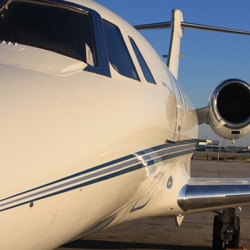An air ambulance is a vital transportation option for emergency healthcare. Whether an injured hiker needs to be rescued from a mountaintop, or a trauma case has to be transported to a suitable hospital, this mode of transportation can ensure timely medical, life saving treatment. However, before getting into an air ambulance, there are some things that should be checked out beforehand such as:
How experienced is the crew?
Pilots and co-pilots of an air ambulance have to have at least 2500 flight hours logged before they become captains. In addition, they have to have at least 5 years of experience in the ER, CCU or ICU of a medical facility before they are deemed capable. The pilot should also have a FAA (Federal Aviation Administration) certified degree from a notable flight school or at least a second class certificate as a commercial pilot. Needless to say the flight school they get their degree from should also be FAA certified. Flight nurses in an air ambulance should have at least 5 years of experience working in the ER, ICU or CCU of a facility.
Who needs an air ambulance?
Air ambulances are critical modes of transportation for patients who need to travel to a medical facility fast or need specialized care. These range from cancer treatments, trauma treatment, strokes etc. It is also a suitable alternative transportation mode for seniors who stress out, get claustrophobic or panic during commercial air flights. Patients who need to be transported more than 250 miles to another facility are usually asked to take one as well.
How long does it take to arrange an air ambulance?
An air ambulance crew should be given at least a few days notice to prepare before a patient has to be transported. However, it can also be arranged within 2 to 4 hours for emergency cases. If on the other hand the air ambulance is international, a number of factors will determine the dispatch time will take. These include international permits, visas and passports for the patients and the family members who are accompanying them.
How many family members can accompany the patient onboard?
Family members can accompany a patient on the air ambulance at no extra charge but the number of passengers is usually controlled according to the needs of the patient, the personnel, the type of aircraft that is being used and the equipment onboard. However, still, at least 1 to 2 family members or loved ones are allowed to ride along.
How much does hiring an air ambulance life flight cost?
The price of an air ambulance or booking a medical transfer is costly and is influenced by a number of factors. The most influential aspects include aircraft positioning and how quickly the patient needs to be moved. The closer the aircraft is to the patient, the lower the price. You can also get a lower price if you book the air ambulance a couple of days beforehand. However, you may not have this option in an emergency case. In such a case, it would be best to go for the first available booking you can get, irrespective of price. It will literally be a matter of life and death after all.





